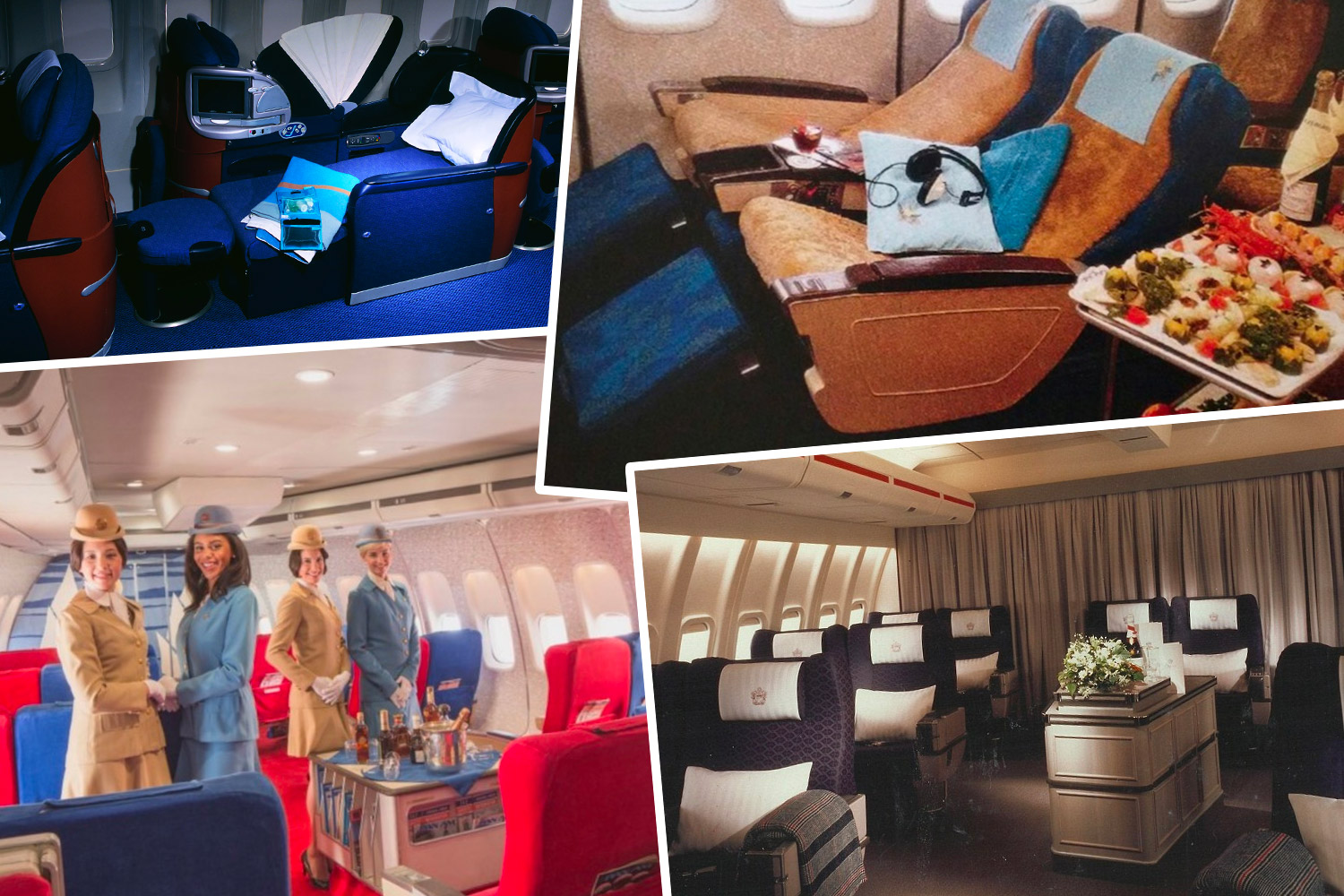
British Airways was the first airline to launch a fully flat business class seat, at the turn of the Millenium. In the 20 years before that (but especially during its first 10 years, in the 1980s), business class was just a glorified version of economy. Now, of course, it’s all suites and sliding doors. Here’s how the transition occurred; how business class has changed over the last 40 years.
Let’s rewind for a second and strap ourselves back into the 1990s (don’t worry, we’ll eventually go back even further). Back then business class looked very different. Business class had only been around for just over a decade in 1990, after airlines started to realise at the very end of the 1970s that they could provide regular fliers with a nicer experience (and make money out of it).
First class cabins had existed, in various shapes and forms, since as early as 1955. And the idea behind that was simple: give people willing to pay substantially more, a much better experience. But business class was conceived of as a way to give loyal (and slightly deeper-pocketed) economy passengers more space, without charging them an arm and a leg (oh, how things have changed).
In this way, ‘business class’ (though it wasn’t known as business class at the time) began in the 1970s, as various airlines started sectioning off a part of their main cabin and (even though the seats were still the same as economy), providing a better service for regular fliers or economy passengers paying full fares (as opposed to flying at a discount, as was often done in the main part of the economy section).
The New York Times reported on this in 1975, remarking on how: “Several airlines have…started giving full‐fare coach customers better treatment.”
They talked about KLM, a Dutch airline, “putting an ‘FFF’ insignia–for ‘full‐fare facilities’–on the ticket jackets and baggage tags of its passengers in economy class [who were paying full fare prices],” and “providing a special check‐in counter at the Kennedy and Schipol (Amsterdam) airports and when possible providing last‐on ‘and first‐off baggage handling” for those same passengers.
“The idea,” said a KLM airline official at the time, according to The New York Times, “is to help make the business traveler’s journey smoother.”
“The person on a business trip usually wants to be quiet, and not mixed in with vacation groups who may be rather lively.”
KLM airline official.
Several other airlines, like Delta, Pan American World Airways and Japan Airlines, also started introducing this kind of special section around the same time period.
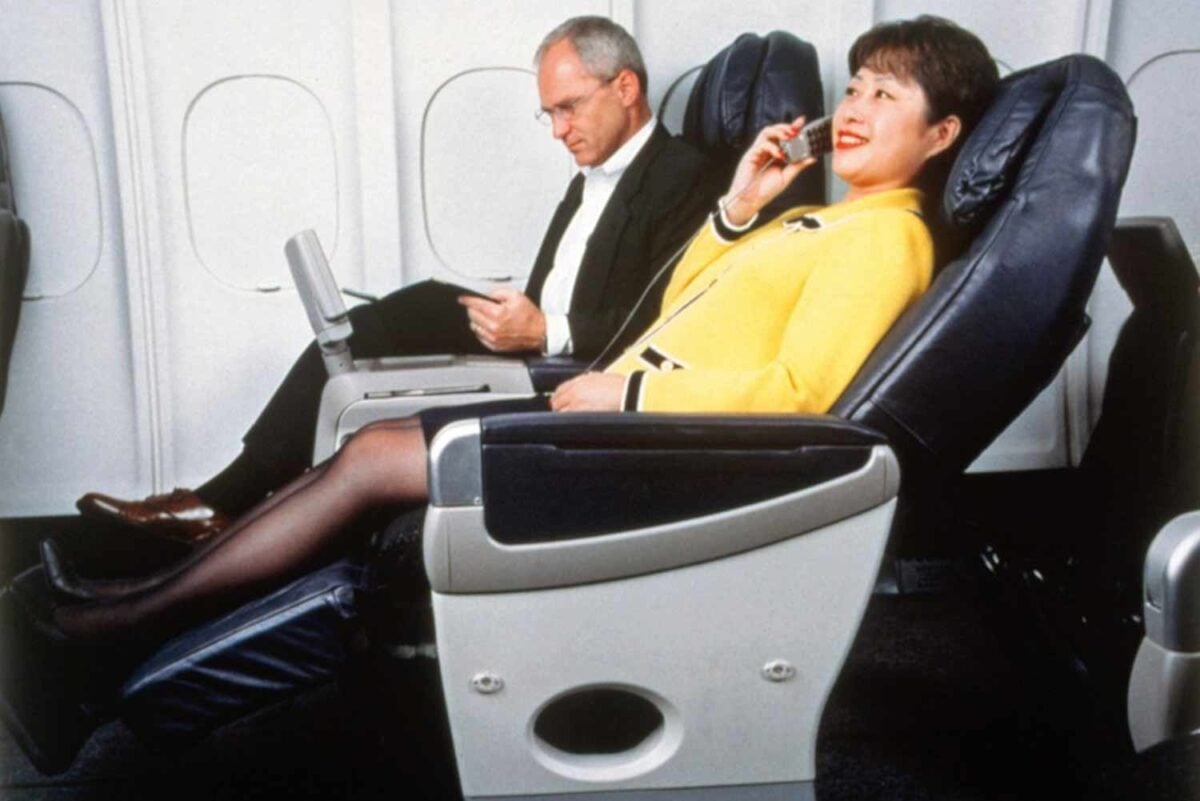
The tactic proved popular. It began being taken further, too. British Airways, for example, launched an ‘Executive Cabin’ on the Boeing 747 in 1977, which not only had better service but also less crowded seating than the rest of economy (although the seats were the same).
Thai Airways were arguably the first airline to use the actual phrase “business class,” launching a product called “Business Class” in 1977 on long haul flights. However, although this was a step up from the main economy cabin, none of these products were really business class. Chiefly, this is because they were still economy seats and economy class tickets.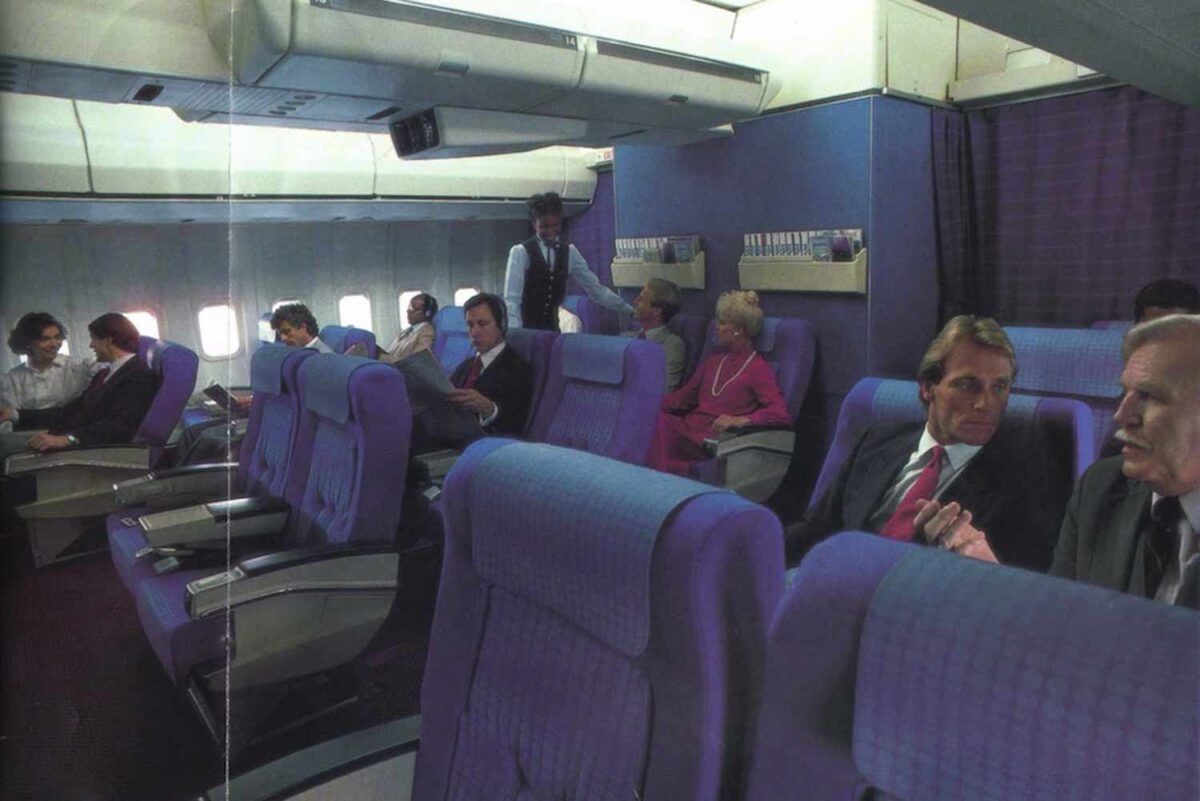
No airline had a true business class cabin until 1979. This was when Qantas started offering a larger business class seat, as well as better service and entertainment, for a higher fee than economy class.
Qantas charged passengers 15% more for this style of seat than than for economy. It came into effect on the routes between the USA and Australia.
British Airways launched a similar ‘Super Club’ cabin in 1981. Pan Am and TWA, too, brought out similar products around the same time.
This style of business class was where true business-class started. Through the 80s it was characterised by ‘armchair’ style seats, while the 90s were characterised by ‘cradle’ like seats with adjustable head and footrests to help you recline (though not to the point of being fully flat).
It wasn’t until the turn of the century that we started to see lie flat seats.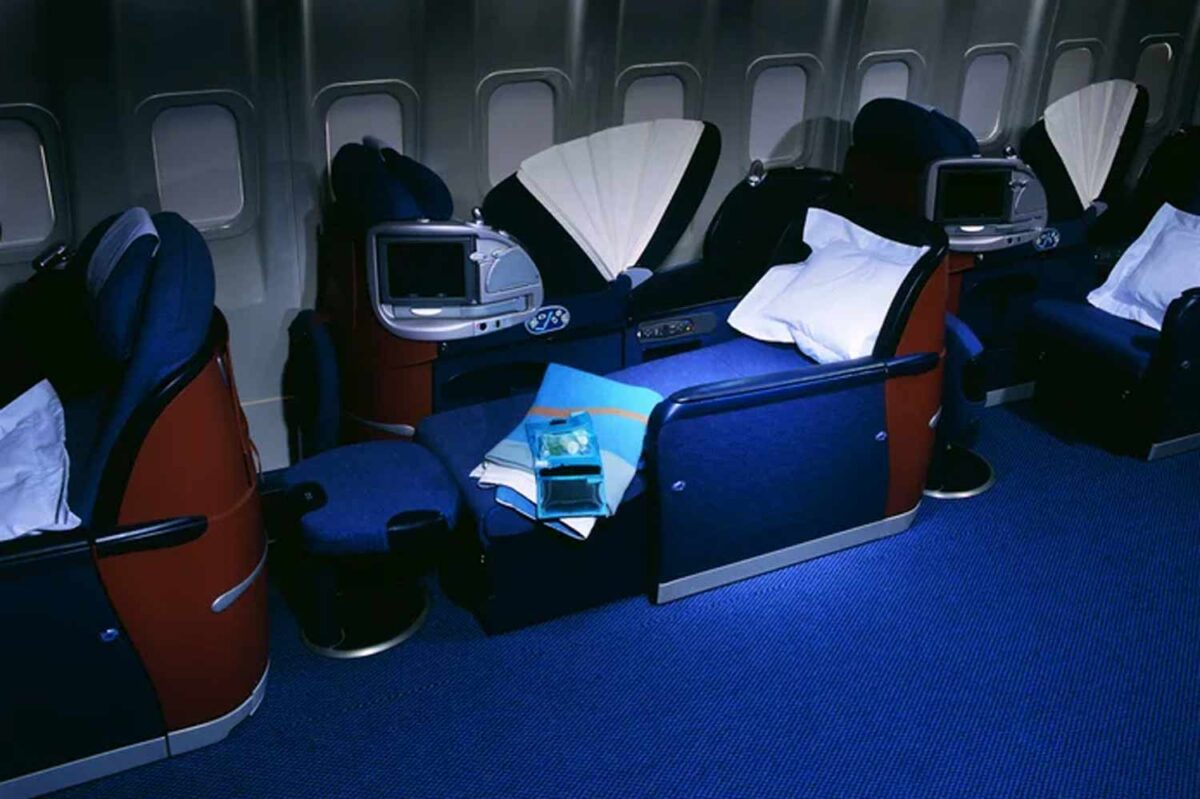
British Airways led the way with this one, introducing a reclining-flat bed business class in March 2000 in collaboration with the British company Tangerine.
This fairly quickly became the industry standard, with most other big airlines eventually following suit. The next big breakthrough in business class came in the form of private suites, of which Qatar Airways is probably the best example.
Qatar Airways’ Qsuite product, which was launched in 2017, is an enclosed business class space, with a lie flat bed which you can choose to switch from bed to seat at the press of a button. It also, as has become standard since the year 2000, has a number of other creature comforts, which have become part and parcel of the business class experience since the year 2000 (amazing infotainment, menus designed by prestigious chefs, the option to dine on demand).
The 1-2-1 configuration has also become (almost) industry standard, as business class passengers now expect equal aisle access for all.
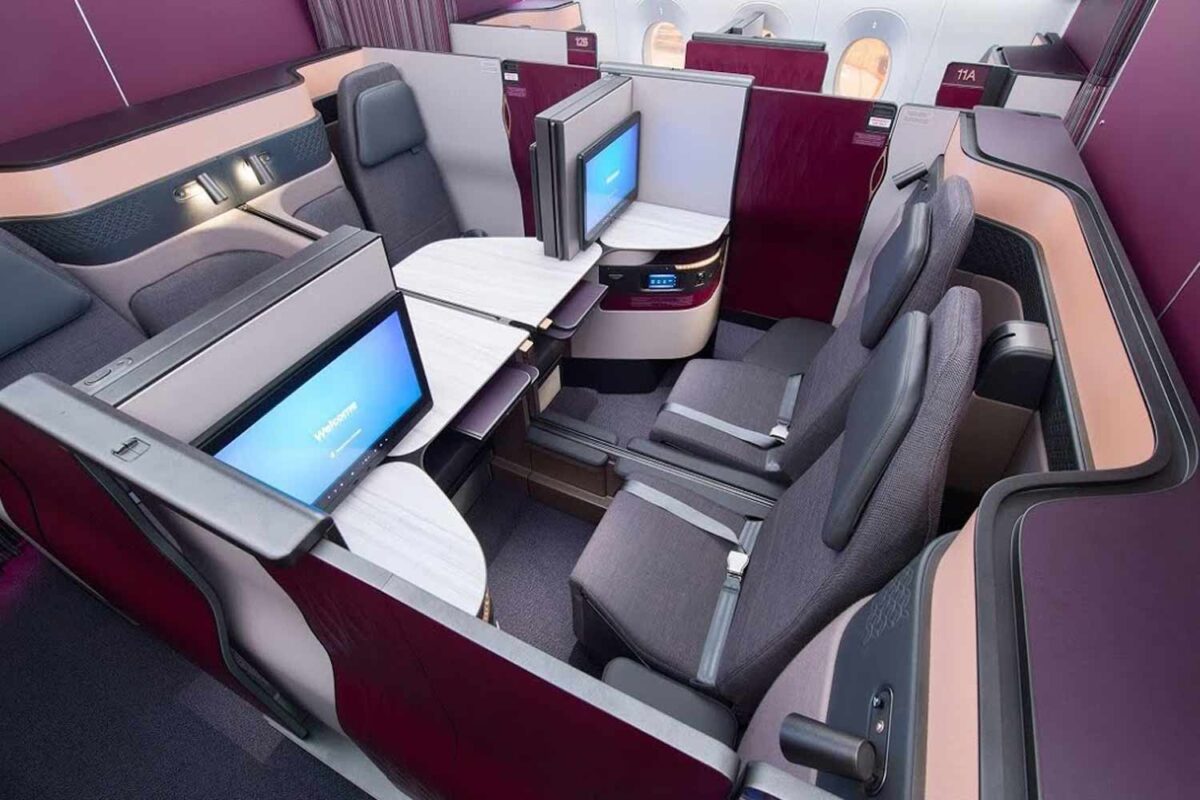
Various other airlines now have business class suites too, including Delta with its Delta One Suites, Virgin, with its The Business, ANA with its ANA The Room and British Airways with its new Club Suite.
There you have it: business class’ evolution, summed up.
Read Next
- The Best Business Class Seats To Fly In 2022
- The Hidden Benefits Of Flying Business Class Economy Passengers Have No Idea About
The post How Business Class Has Changed Over The Last 40 Years appeared first on DMARGE.

0 Commentaires